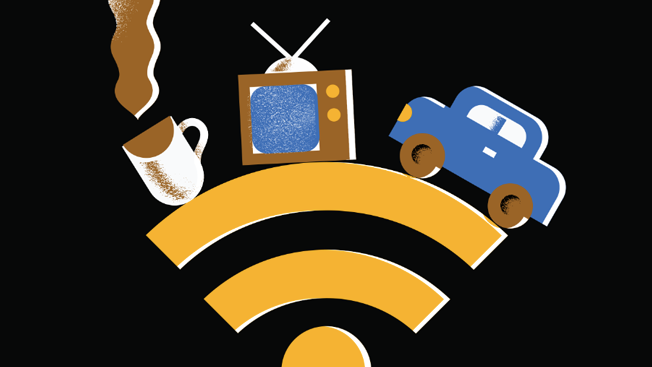The Internet of Things (IoT), the slightly clunky term for the new generation of connected cars, homes, clothes and products, is already having a radical impact on consumer marketing. Based on Deloitte projections, a billion wireless IoT devices were shipped in 2015, a 60-percent increase from the year before. But while marketers have good reason to be enthusiastic, they also need to be conscious of how a connected world will impact everything from their data-driven decision-making to their relationship with customers—for better or worse.
Here’s our 2016 marketing roadmap highlighting the opportunities and obstacles of the Internet of Things:
1. No more guesswork
From the perspective of brand marketers, a future in which all of our products are networked could hardly be more appealing. Just think of how digital marketers operate today: Billion-dollar industries have been built around making educated guesses about what consumers want based on their online browsing habits. IoT, meanwhile, can remove most of the guesswork from the equation. Marketers will no longer need algorithms to predict what consumers buy next. They’ll be told what consumers need directly via hundreds of different devices. Brands that sell “smart” light bulbs, for example, will know when their products need to be replaced and can target their customers at exactly the right moments. If a consumer is driving a “smart car”—to take another example that is already becoming a reality—the automaker will be able to detect that the car’s battery is reaching the end of its life and direct the driver to the nearest service station—even before the driver is aware of the issue.
What that means to your marketing organization: Rather than focusing strictly on optimizing algorithms, turn your attention to the highly predictable, highly actionable data that the IoT provides. Being able to recognize a customer’s need and act on it almost instantaneously in real time is the modern marketer’s dream. Using your current data and algorithms in combination with the immediacy of IoT data brings a new meaning to “right place, right message, right time.”
2. New relationship with the customer
In the above examples, the data transmitted from the light bulb or the car to the brand is much more than an opportunity to drive sales through better targeting. It’s also an opportunity for the brands to offer much better experiences and to build much deeper relationships with consumers. Take the Nest “smart thermostat,” for example. Before Nest came onto the scene, very few consumers thought of their thermostat as a central part of their lives. But Nest maintains long-term relationships with its customers. They check their energy use through Nest’s app and use it to control their homes while they’re on the go. Best of all, Nest’s user interface constantly reminds consumers that Nest is saving them money on their energy bills. This is critical because, as Deloitte research reveals, consumers are very sensitive to the higher prices of IoT products. If marketers can’t make a convincing case for the benefits of IoT, as Nest does with its energy and cost-saving reports, consumers will likely feel intruded upon and may even resent IoT brands.
What that means to your marketing organization: IoT offers marketers a direct communication channel to the things consumers interact with every day. Don’t abuse this opportunity by treating it as an advertising channel. Rather, earn consumer loyalty by fostering a relationship based on customer service. Additionally, be proactive in your communication by predicting rather than reacting to their needs.
3. The security challenge
Considering all the excitement surrounding IoT, it’s perhaps been a little too easy to look past the risks. But the risks are all too real, and the brands that come out ahead in IoT will likely be the ones that give these risks the most attention. The most pressing concern, of course, is that brands will be in control of a lot more data about consumers and, considering how many brands have been hacked in recent years, consumers have every right to be concerned. In its report on how the Internet of Things puts consumer privacy and security at risk, the FTC recommends that brands consider limiting how much consumer data they collect and how long they store it.
What that means to your marketing organization: Security is a very real threat to the data-value exchange between a brand and consumer. Take active steps to ensure that consumers understand and are satisfied with your current and future plans to ward off security issues. The more transparent you are about how their data is protected, the more understanding they may be if there ever is an issue.
For marketers excited about the prospect of gathering far more data, the FTC’s call for self-restraint might not sound very appealing. But as Nest learned when its smoke detector was revealed to have a serious design flaw, with deeper customer relationships come deeper customer responsibilities. This isn’t to discount the enormous promise of IoT for marketing. Rather, it’s a reminder that for brands to take full advantage of a world of “smart” products, they’ll also need to practice smart marketing.








